WBC vs PBC – What’s the Deal?
There are broadly two forms of cryotherapy where the body as a whole is cooled down:
- Whole Body Cryotherapy (WBC)
- Partial Body Cryotherapy (PBC)
Both are sometimes confusingly called Whole Body Cryotherapy but there are some key differences.
This article aims to clear up the confusion.
Cryotherapy is a treatment that involves exposing an individual’s body to extremely cold temperatures. The extreme cold air produces a ‘thermal shock’ (which isn’t nearly as uncomfortable as it sounds) by rapidly cooling down the surface of the skin.
Reducing surface skin temperatures sends messages from thermo-receptors in the skin to the central thermoregulatory centre in the hypothalamus. The thermal shock the brain registers then stimulates a series of physiological changes to the body’s processes.
This includes the release of hormones, neurotransmitters and anti-inflammatory proteins into the bloodstream.
As cryotherapy causes vasoconstriction of blood vessels, the warm up phase afterwards results in thermogenesis (which is helpful for burning calories) and vasodilation of those same blood vessels. This effect results in oxygenated, nutrient rich blood – now full of helpful hormones and proteins – to circulate throughout the body, resulting in the amazing effects cryotherapy is famous for.
Electric WBC vs Nitrogen PBC
Both types of chamber focus on producing extremely cold environments to safely cool the skin down – but do so in different ways.
- Electric chambers work like super-charged freezers, using electrical power to produce cold and dry air with a stable temperature within the chamber
- Nitrogen cooled chambers use liquid nitrogen to either directly cool the chamber space, or to cool the air going into the chamber.
While that difference may be obvious, the different cooling methods mean there are some significant differences between the two methods and the experience they offer.
Whole Body vs Partial Body
The most obvious difference is how an individual goes into the chamber.
- In an electric chamber, the individual steps entirely into the chamber area and is free to move around, dance or meditate (whatever suits). The chamber may be cold but it’s quite possible to breathe normally.
- In a nitrogen chamber, there’s no breathable air so the head cannot be exposed to the cold. This means the participant needs to stand still with their head sticking out of the chamber.
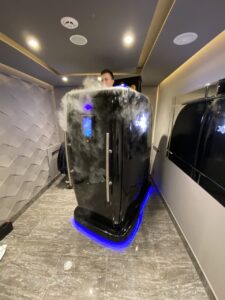
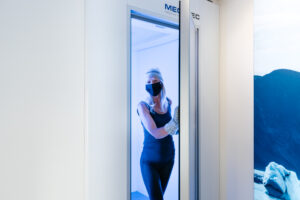
Why is this significant? A significant number of the body’’s thermo-receptors are concentrated in the head – meaning with the head/face exposed to the extreme cold the effect (as measured by the signals going back to the hypothalamus) is more pronounced.
If you want a simple demonstration of this effect, just think about how ‘awake’ you feel if you splash your face with cold water. Or, why Wim Hof and other cold therapy advocates encourage ‘newbies’ to try ice facials.
The extra benefits of having your head immersed in the chamber are significant. And it’s also why an electric chamber is genuinely whole body cryotherapy. Your entire body is inside the chamber.
As an extra benefit, the Cryo Hub’s state-of-the-art electric chamber also has speakers so you can choose your favourite music to meditate, exercise or flat out dance too during your session. It’s a pleasant place to be for 3-5 mins…
Temperature
Our electric chamber is designed to cool down consistently to -85℃. Consistent is the key word there as it means the entirety of the chamber is at that temperature.
Nitrogen chambers are often advertised as cooling from -120 to -160℃. That extreme cold is true of the stored gas – but as anyone who suffered physics at school (ideal gas law anyone?) will recall, once that gas is released and expands, its temperature will go up significantly.
What does that mean for PBC? For starters it unfortunately means for the manufacturers that the advertised temperature is nowhere close to what the skin actually experiences.
It also means that nitrogen chambers are prone to convection currents. And this is where it gets interesting.
Temperature Gradients for WBC vs PBC
Studies for both Whole Body Cryotherapy and Partial Body Cryotherapy have shown their effectiveness at treating a broad variety of conditions – but this study in particular compared the efficacy of the two.
One of the most startling findings can be seen in the graphic shown. The top graphic (A) shows the cooling effect of PBC immediately before (a,b) and after (c,d).
What can be seen is that the head (as it’s outside the PBC chamber) does not cool at all – but also that the upper body remains much warmer than the lower limbs.
Why? Going back to the physics lessons, colder air sinks. So when the PBC chamber uses gas as the coolant, the gas behaves likes a gas – with the cooler gas sinking down and cooling the lower limbs more.
In contrast, the lower graphic (B) shows the effect of WBC before (a, b) and after (c,d). In this case the entire body can clearly be seen to be cooled consistently and the head (outside of the protective headband and face mask being worn) is also cooled.
The consistent cooling across the body is a function of the electric chamber – the technology keeps the temperature within the chamber consistent from head to toe. And once again, not to labour the point, that includes the head!
The Colder the Better Right?
In a word, no! Extreme cold can be dangerous – resulting in cryogenic burns in extreme cases.
Equally staying too long in cold temperatures is also dangerous, but also counter-productive. Cryotherapy of any kind should be a pleasurable experience rather than leaving the participant shivering.
The key to the benefits are in safely inducing the thermal shock described at the top of this article. By cooling the whole body down quickly, WBC can induce the stimuli the brain and body needs to react to produce the myriad effects which range from improved mood and energy through to managing inflammatory pain. This can, and should be, a safe and pleasurable experience.
The Mecotech Cryochamber at The CryoHub provides just that. That’s why in any session we will record your skin temperature before and after to ensure we’re generating the differential needed for you (everyone is different) so the benefits of the thermal shock can be obtained, without the participant needing to experience an actual shock.
Want to Give it a Go?
We know the notion of stepping into a giant freezer sends (metaphorically) shivers down some people’s spines.
But there’s a reason so many people love it – and extoll the benefits.
If you want to give it a go – have your first session on us. Go to the booking page, book a session and use the code FIRST-FREE.

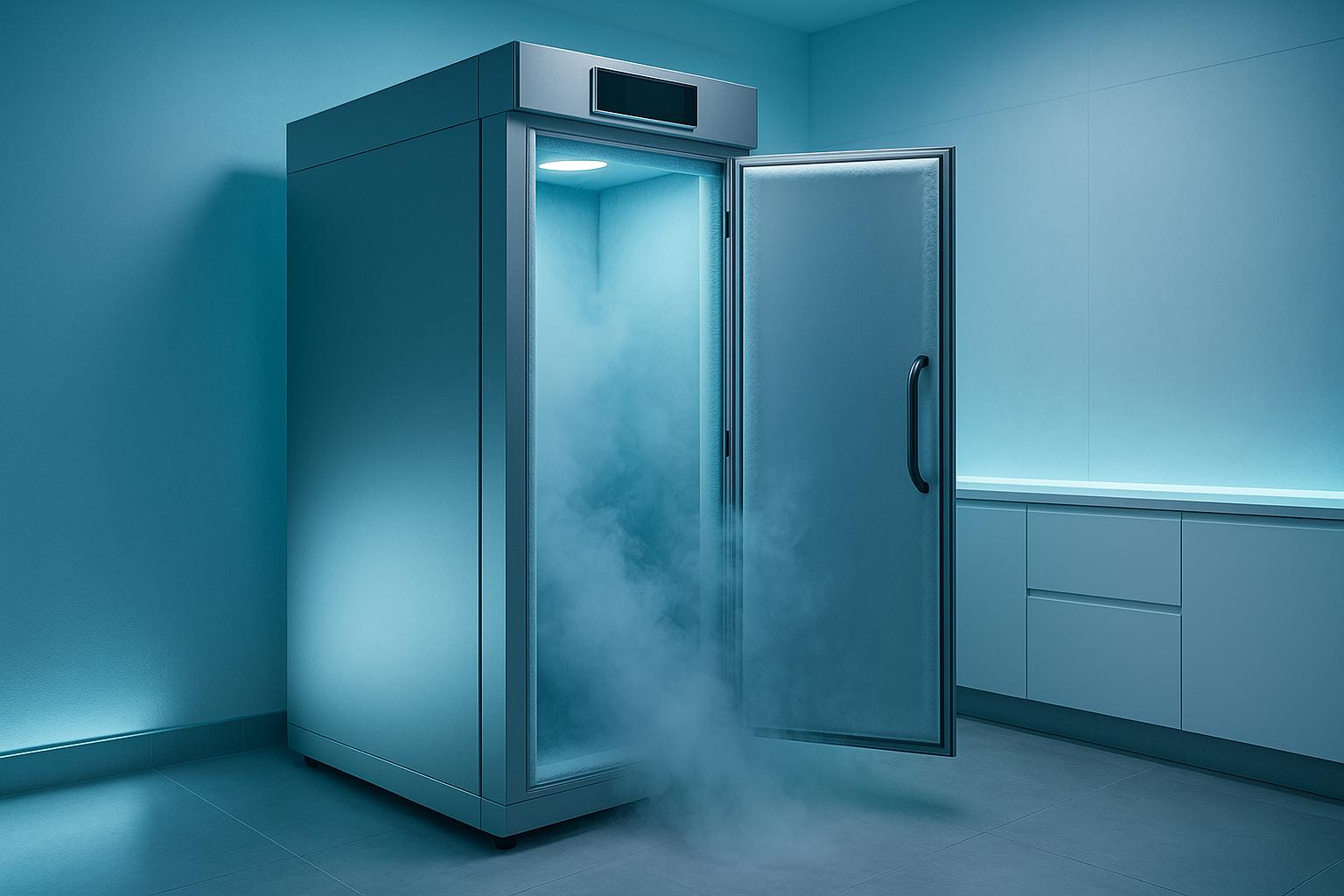
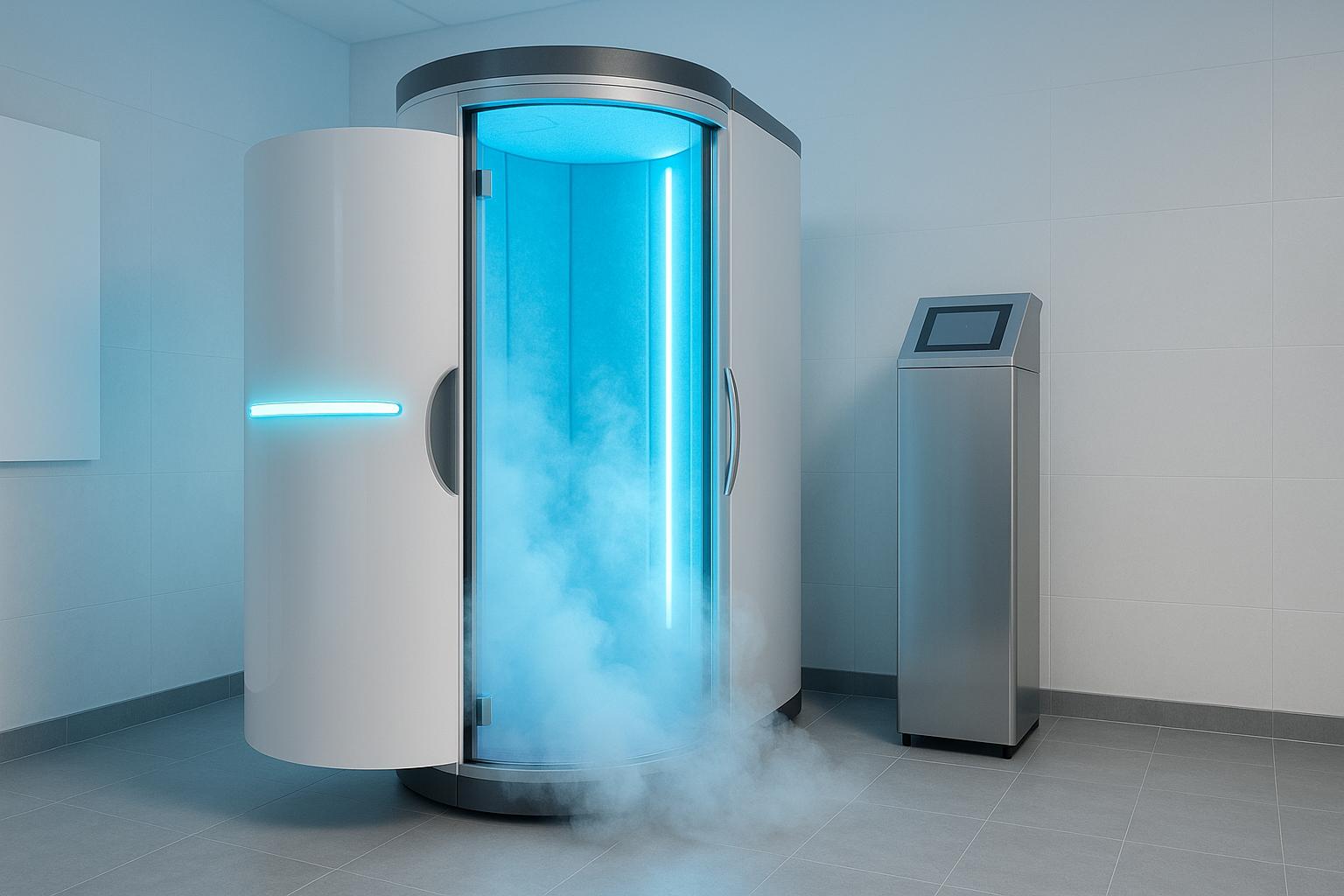
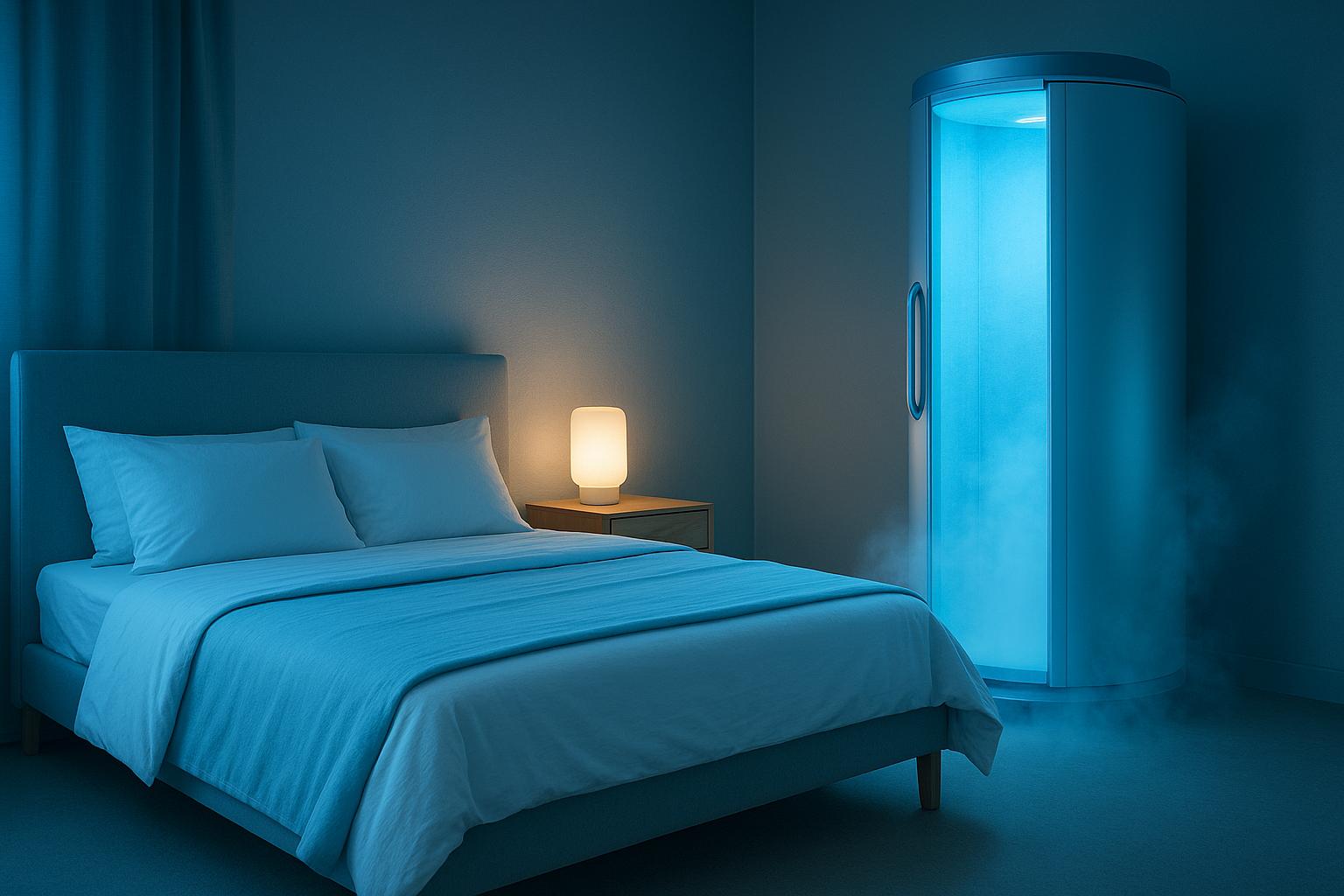

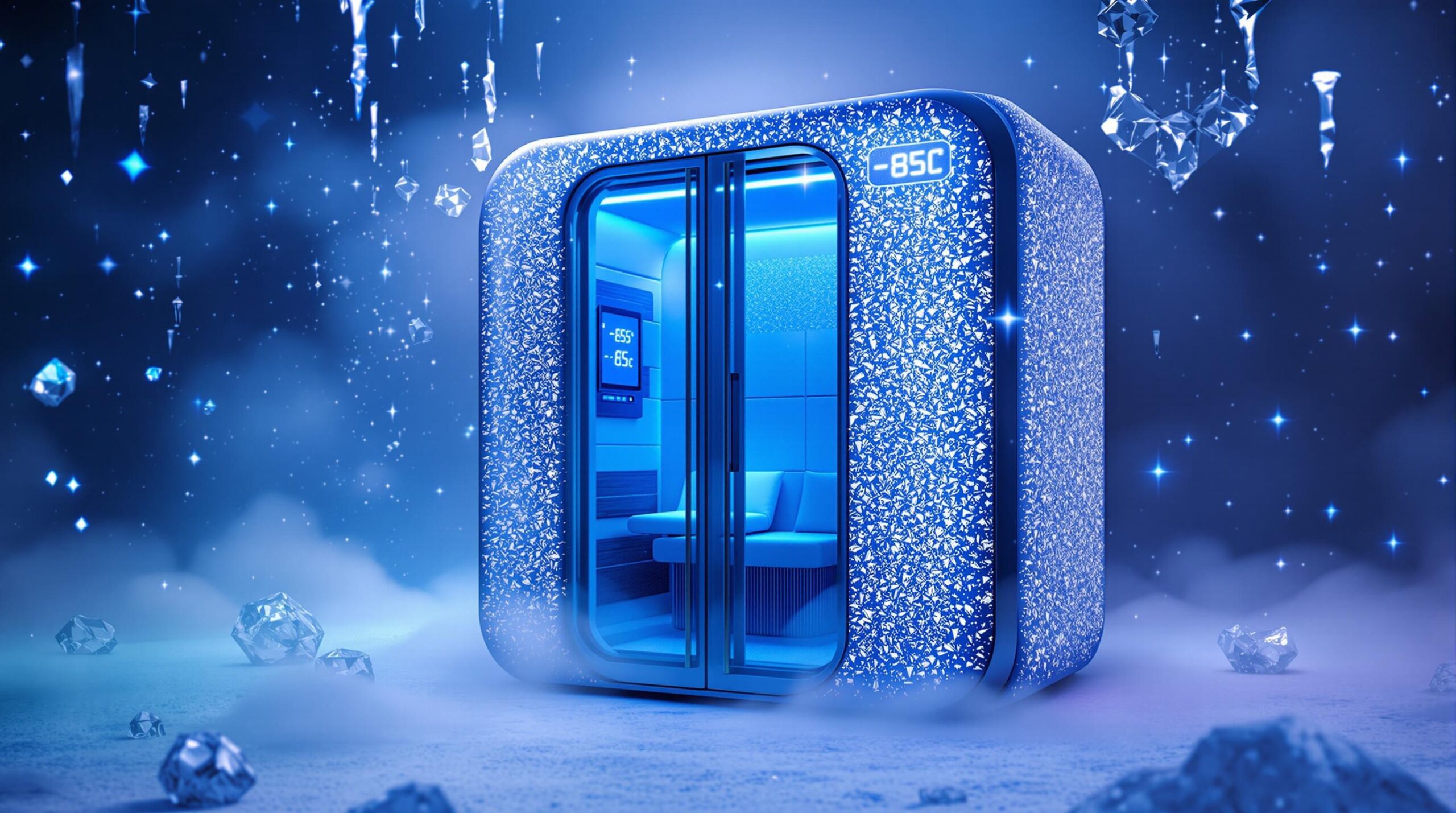


6 Responses